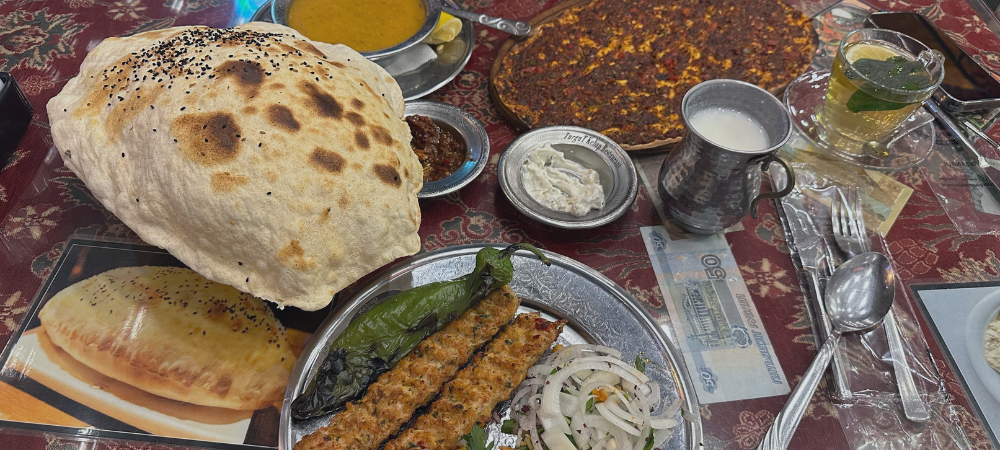Introduction to the 26 Best Buildings to Visit in India
India, a land of staggering diversity and rich cultural heritage, is also home to some of the world’s most magnificent architectural marvels.
This blog post takes you on a journey to explore the 26 Best Buildings to Visit in India showcasing the country’s rich tapestry of history and culture through its iconic structures.
Each building tells a story, reflecting the many influences – from local dynasties to foreign invasions – that have shaped India’s unique architectural landscape.
One more thing before we are getting started with the best buildings to visit in India: Make sure to NOT get ripped off by uncertified tour guides which will be found in front of EVERY building in India, offering their services but will not provide you with good information. If you want to know more about this, read this article about tourist scams in India and how to avoid them.
Don’t miss out on the chance to book a guided tour through India here!
- Introduction to the 26 Best Buildings to Visit in India
- The Best Buildings to Visit in Jaipur
- The Best Buildings to Visit in Udaipur
- The Best Buildings to Visit in Agra
- The Best Buildings to Visit in Delhi
- The Best Buildings to Visit in South India
- The Best Buildings to Visit in Western India
- The Best Buildings to Visit in Northern India
- The Best Buildings to Visit In India
- Frequently Asked Questions on the Best Buildings to Visit in India
- Conclusion on The Best Buildings to Visit in India
Want to fly for India but you only have a limited budget? Check outWayAway, your ultimate flight comparison tool, and discover how easy it is to find unbeatable deals. Get the iOS app or android app here.
The Best Buildings to Visit in Jaipur
Jaipur, the capital city of Rajasthan, is a kaleidoscope of architectural brilliance, blending ancient traditions with the aspirations of a modern city. Known as the ‚Pink City‚, Jaipur’s architecture is a testament to the grandeur of Rajput rulers and their rich cultural heritage. This section delves into three iconic structures of Jaipur, each a masterpiece in its own right.
Hawa Mahal: The Palace of Winds
Hawa Mahal, or the Palace of Winds, stands as a striking emblem of Jaipur’s architectural finesse. Built in 1799 by Maharaja Sawai Pratap Singh, this five-story structure with its honeycombed hive-like façade is a blend of Hindu Rajput and Islamic Mughal architectural styles. The most distinctive feature of Hawa Mahal is its 953 small windows, or ‚Jharokhas‘, adorned with intricate latticework.
Originally designed for the royal ladies to observe everyday life and festivals on the street below without being seen, this building also served as a natural cooler with its unique design facilitating air circulation, thus aptly named the ‚Palace of Winds‘. The red and pink sandstone structure is not only a testament to the architectural ingenuity of the past but also a symbol of Jaipur’s rich cultural legacy.
Amber Fort: A Blend of Mughal and Rajput Architecture
Amber Fort, located approximately 11 kilometers from Jaipur, is a majestic fortification set against the backdrop of the Aravalli Hills. Constructed by Raja Man Singh I in 1592, this grand fort is renowned for its artistic Hindu style elements. Made of red sandstone and marble, Amber Fort is a perfect amalgamation of Rajput and Mughal architecture.
The fort comprises a series of courtyards, palaces, halls, and gardens, each narrating a story of royal grandeur. Notable areas within the fort include the Diwan-i-Aam, or the Hall of Public Audience, the Sheesh Mahal, or the Palace of Mirrors, and the Sukh Niwas, where a cool climate is artificially created by winds that blow over a water cascade within the palace.
City Palace: A Glimpse into Rajput Royalty
The City Palace, located in the heart of Jaipur, is a magnificent complex of courtyards, gardens, and buildings. Built between 1729 and 1732 by Sawai Jai Singh II, the palace is a fusion of Shilpa Shastra of Indian architecture with Mughal and European styles. The complex houses several architectural wonders, such as Chandra Mahal and Mubarak Mahal.
The Chandra Mahal, with its intricate peacock gates, offers a panoramic view of the city. The palace also houses a museum with a rich collection of Rajput costumes, armory, and manuscripts. The City Palace stands as a living testimony to the royal history and architectural heritage of Jaipur.
These architectural marvels of Jaipur not only exemplify the artistic prowess of the Rajputana era but also echo the city’s enduring legacy as a center of culture and history. Their timeless beauty and historical significance make them must-visit landmarks for anyone seeking to immerse themselves in India’s royal past.
For a selection of tours and activities on these buildings or cities, explore platforms such as Viator and GetYourGuide to tailor your adventure to your preferences and interests.
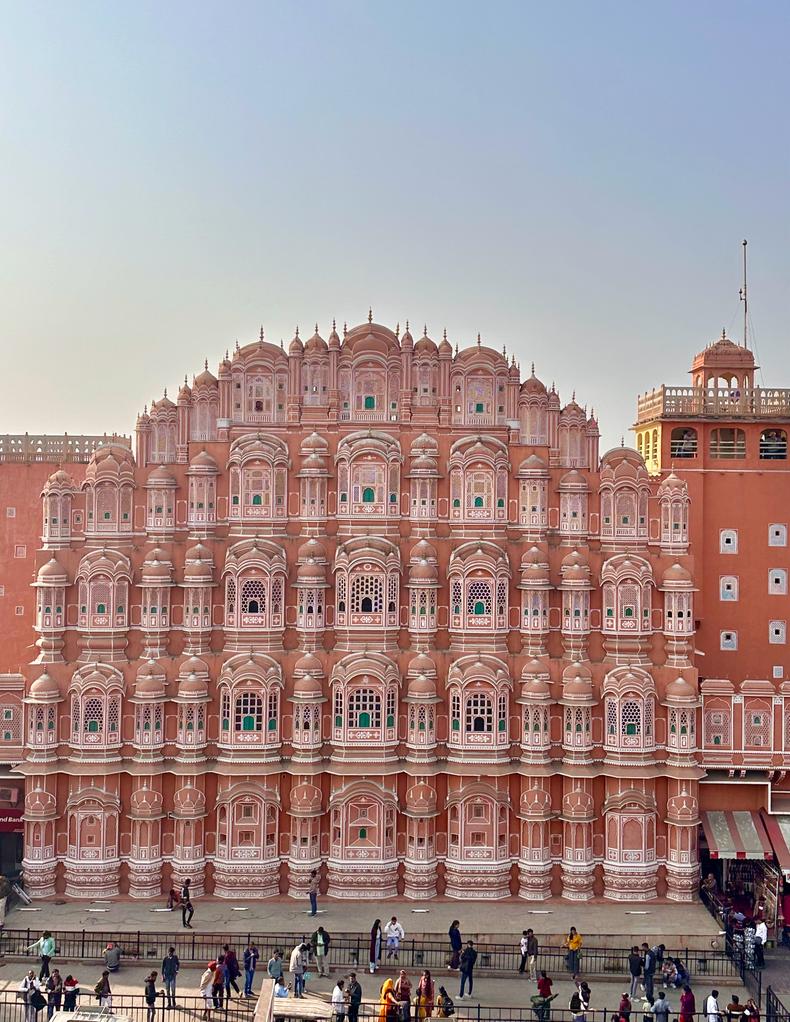
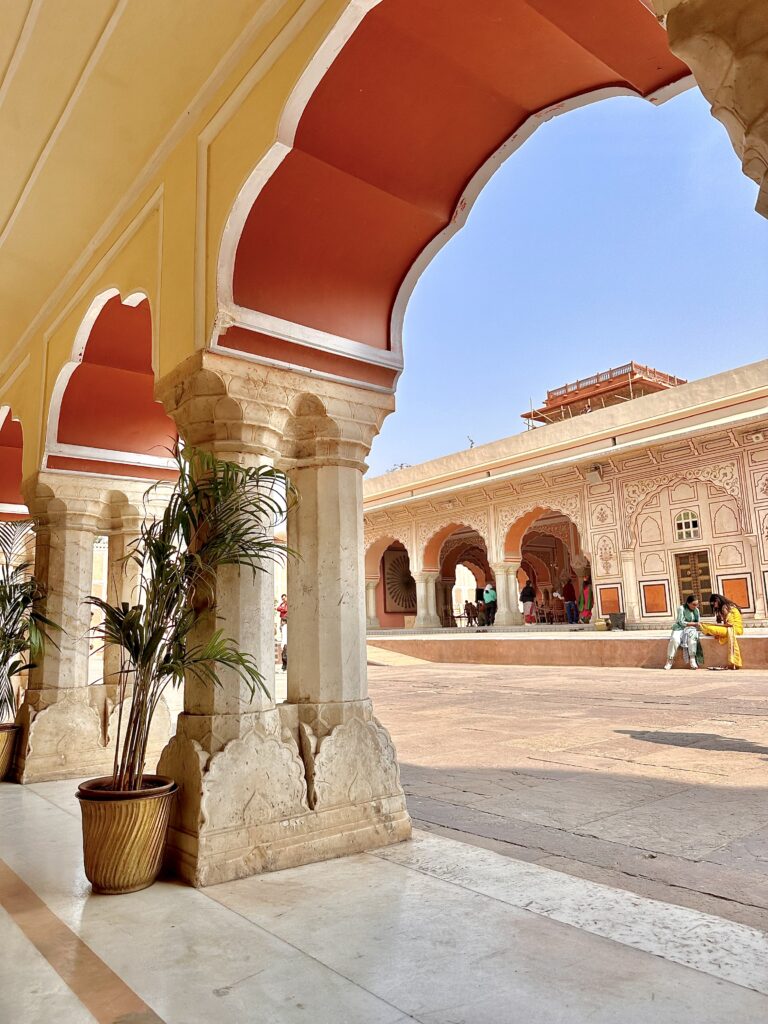
The Best Buildings to Visit in Udaipur
Nestled amidst the Aravalli Hills, Udaipur, often referred to as the ‚Venice of the East‘, is a mosaic of architectural wonders that echo the grandeur of the Rajputana era. This section of the blog post takes you through two of Udaipur’s most iconic structures, each a symbol of the city’s regal past and architectural ingenuity. Let’s explore some more of the best buildings to visit in India:
Jagdish Temple: A Spiritual and Architectural Landmark
Jagdish Temple, situated in the heart of Udaipur, is an exquisite example of Indo-Aryan architecture. Dedicated to Lord Vishnu, this temple was built in 1651 by Maharana Jagat Singh and is famed for its beautiful carvings and a remarkable sense of symmetry. As you step inside, you are greeted by a brass image of Garuda, the vehicle of Lord Vishnu, facing the main shrine.
The main shrine houses a four-armed image of Lord Vishnu, carved out of a single piece of black stone. The walls and pillars of the temple are adorned with intricate carvings depicting scenes from Hindu mythology, including the Ramayana and Mahabharata. The temple’s three-storied structure, with its intricately carved spire, showcases the skill and artistry of the craftsmen of the era, making it a must-visit for anyone interested in the fusion of spirituality and architecture.
City Palace Udaipur: A Testament to Regal Majesty
City Palace in Udaipur, towering over the Pichola Lake, is a complex of palaces famed for its exquisite blend of Medieval, European, and Chinese architecture. Built over 400 years, with contributions from several rulers of the Mewar dynasty, the palace is a labyrinth of courtyards, pavilions, terraces, corridors, rooms, and hanging gardens, each with its own unique story.
The palace’s façade, a 244-meter-long and 30.4-meter-high composition, is an imposing sight. The interiors are adorned with mirror-work, marble-work, murals, wall paintings, silver-work, inlay-work, and leftover pieces of colored glass. The complex also houses the Crystal Gallery, the Vintage Car Museum, Daawat-i-Aam, Daawat-i-Khas, and the Maharani Palace.
The City Palace not only narrates the tale of the Mewar dynasty but also offers a panoramic view of Udaipur city and its surroundings, including the Lake Palace, Jag Mandir, Jagdish Temple, and the Monsoon Palace.
Udaipur’s architectural treasures, steeped in history and art, are not just buildings; they are the narrators of tales of romance, valor, and glory of the Rajput kings. Their timeless beauty and the stories embedded within their walls make them an essential part of any cultural exploration of India.
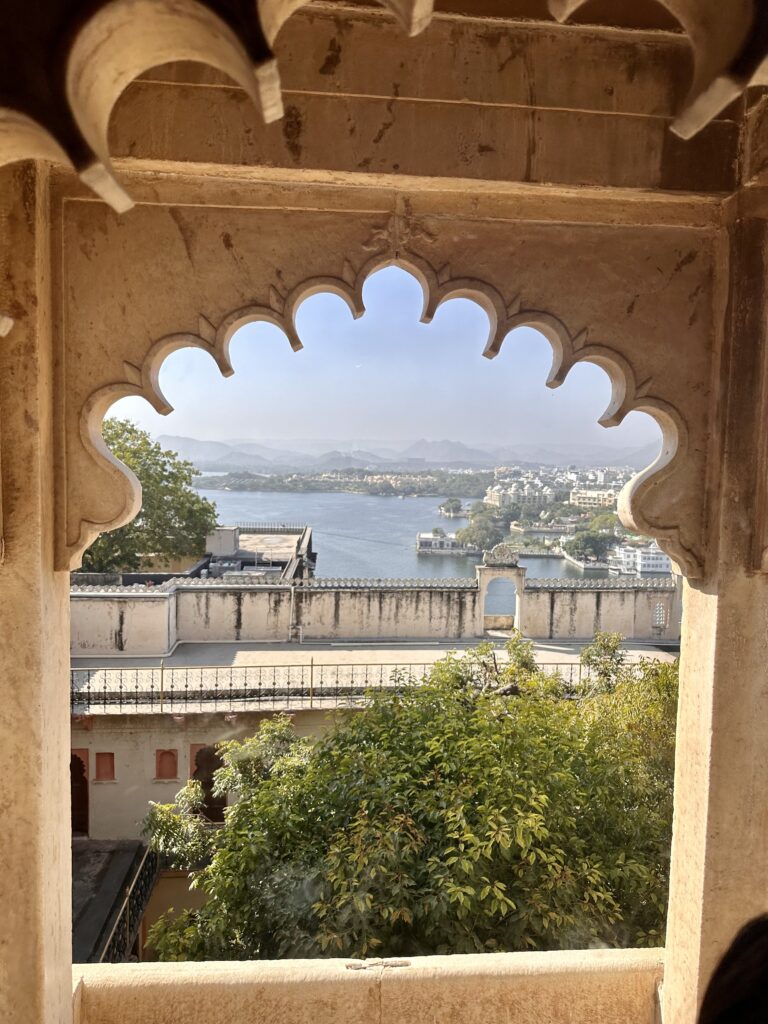
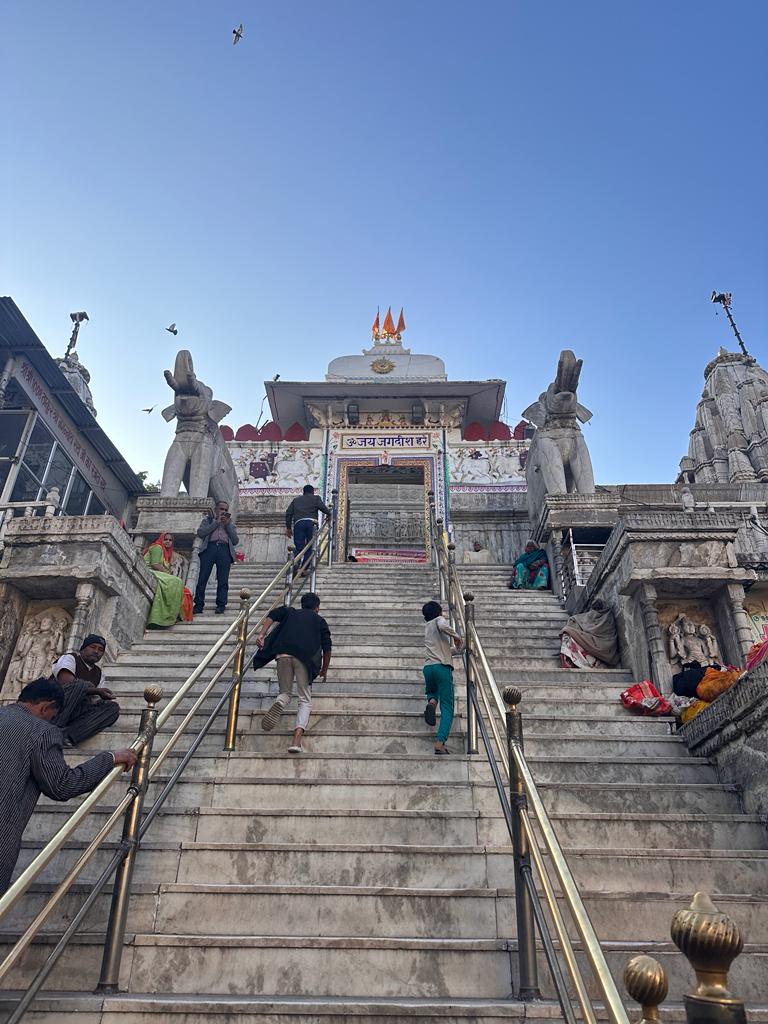
The Best Buildings to Visit in Agra
Agra, a city steeped in history and grandeur, is home to some of the most iconic symbols of India’s rich architectural heritage. This section explores two monumental structures that not only dominate Agra’s skyline but also represent the zenith of Mughal architectural prowess.
Taj Mahal: A Marvel of Mughal Architecture
The Taj Mahal, often described as ‚a teardrop on the cheek of time‘, stands as a testament to love and architectural brilliance. Built by Emperor Shah Jahan in memory of his beloved wife Mumtaz Mahal, this mausoleum is a UNESCO World Heritage Site and one of the Seven Wonders of the World. Constructed entirely out of white marble and inlaid with precious stones, the Taj Mahal is renowned for its symmetrical proportions, intricate carvings, and calligraphy.
The complex includes a main gateway, garden, mosque, guesthouse, and several other palatial buildings. The central dome, flanked by four smaller domes, is a breathtaking sight, especially when it captures the hues of the rising or setting sun. The reflection of this architectural marvel in the Yamuna River is a sight to behold, symbolizing the depth of the emperor’s devotion.
Agra Fort: A Symbol of Mughal Strength and Elegance
Agra Fort, also known as the Red Fort of Agra, is less than 3 kilometers from the Taj Mahal and is another significant building to the Mughal Empire’s architectural and military prowess. Built primarily as a military structure by Emperor Akbar in 1565, it was later transformed into a palace by his grandson Shah Jahan.
The fort’s robust red sandstone walls enclose a series of regal palaces, including Jahangir Palace and Khas Mahal, audience halls like Diwan-i-Khas, and two very beautiful mosques. The fort, with its semi-circular plan, its 70-foot high walls, and a 2.5-km perimeter, was both an imperial residence and a stronghold. This UNESCO World Heritage Site offers a fascinating walk through India’s Mughal past, with stunning views of the Taj Mahal and the city of Agra.
The architectural marvels of Agra, the Taj Mahal, and Agra Fort, are not just historical structures; they are the embodiments of a rich cultural and artistic legacy that continues to inspire awe and wonder in the hearts of visitors from around the world.
Don’t miss a beat on your travels by booking your attraction tickets through Tiqets, a user-friendly platform offering access to a world of experiences. It’s your ticket to hassle-free adventures, from iconic landmarks to hidden treasures, ensuring you make the most out of every destination.
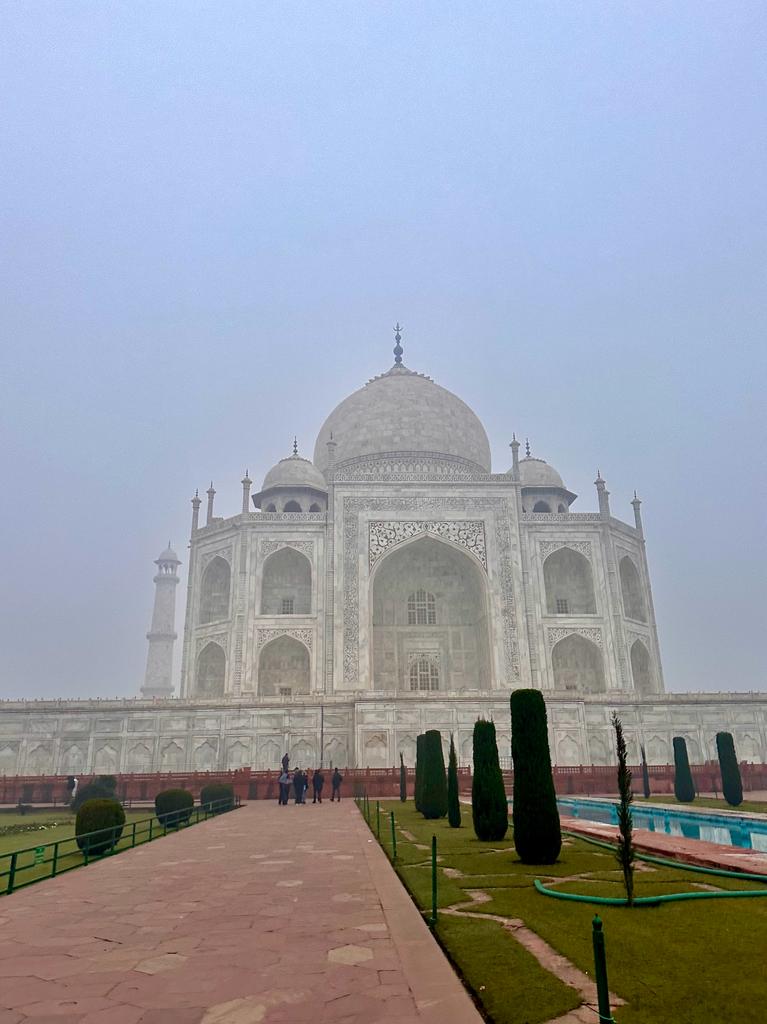
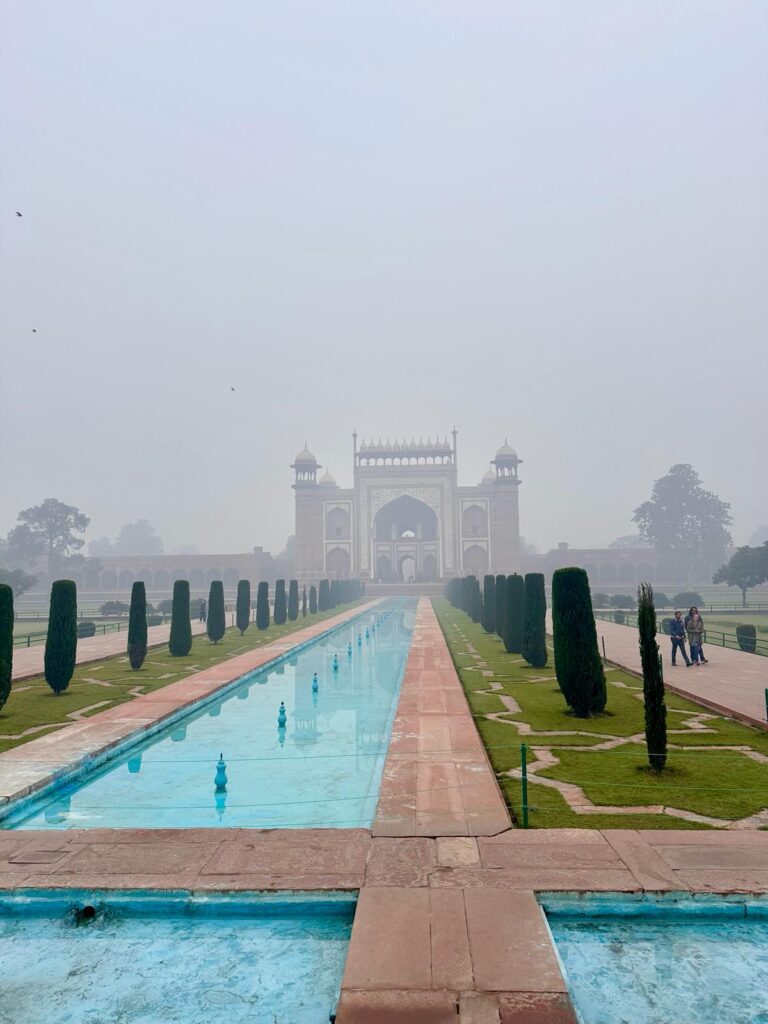
The Best Buildings to Visit in Delhi
Delhi, the capital city of India, is a splendid canvas displaying centuries of architectural evolution. This section highlights four of Delhi’s most significant architectural landmarks, each bearing testimony to the rich historical and cultural tapestry of the city.
Qutb Minar: A Monument of Islamic Art
Qutb Minar, a UNESCO World Heritage Site, is an astonishing example of early Indo-Islamic architecture. This 73-meter tall tower was constructed by Qutub-ud-Din Aibak in 1193, later completed by his successors. Made of red sandstone and marble, Qutb Minar is adorned with intricate carvings and Quranic inscriptions.
The tower has five distinct stories, each marked by a projecting balcony. The complex also houses several other historical monuments, including the Quwwat-ul-Islam Mosque and the Iron Pillar. Qutb Minar is not just a monument but a symbol of the Islamic rule in India and its cultural influence.
Red Fort: A Symbol of Mughal Power
The Red Fort or Lal Qila, with its massive red sandstone walls, was the main residence of the Mughal emperors for nearly 200 years. Built by Emperor Shah Jahan in 1639, it encapsulates the zenith of Mughal creativity under Shah Jahan. The fort’s architectural elements, including the Diwan-i-Aam, Diwan-i-Khas, Rang Mahal, and Moti Masjid, reflect a fusion of Persian, Timurid, and Indian architectural styles.
The fort’s significant role in India’s history, especially as the backdrop to the country’s independence, adds to its historical importance and allure.
Humayun’s Tomb: The Precursor to the Taj Mahal
Humayun’s Tomb, another UNESCO World Heritage Site in Delhi, is often regarded as the inspiration for the Taj Mahal. Built in 1570 by Bega Begum in memory of her husband, Emperor Humayun, this tomb is an outstanding monument of the Mughal era, known for its high arches and a majestic dome.
The complex is a beautiful synthesis of Persian architecture and Indian traditions, set within a charbagh (a four-part garden). The garden, with its geometrically arranged pathways and water channels, complements the tomb’s elegance and serenity.
Lotus Temple: A Modern Architectural Wonder
The Lotus Temple, known for its flowerlike shape, is a Bahá’í House of Worship that was completed in 1986. Designed by architect Fariborz Sahba, the temple is made of 27 free-standing marble-clad petals arranged in clusters to form nine sides.
The Lotus Temple is a symbol of unity, welcoming all regardless of religious belief, and is admired for its serene ambiance and striking architecture. It represents a new era in architectural history, combining ancient symbols with modern technology.
These architectural masterpieces of Delhi embody the diverse historical epochs that have shaped the city. They are not just structures made of stone and marble; they are the keepers of stories, the witnesses of history, and a source of inspiration for generations.
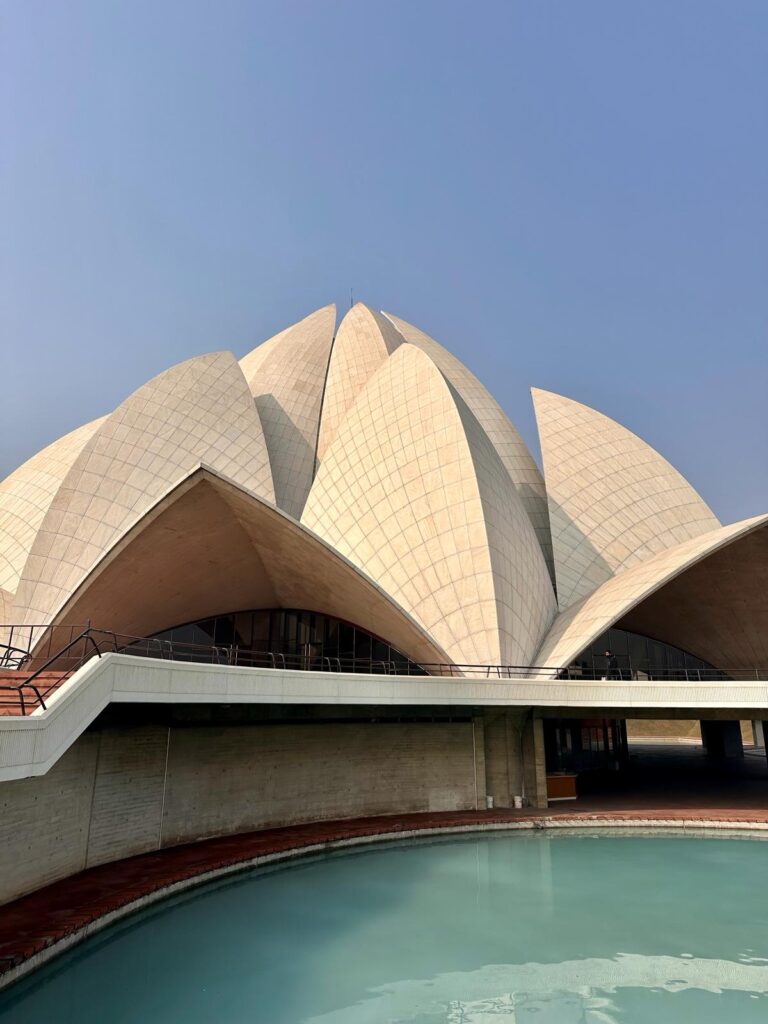
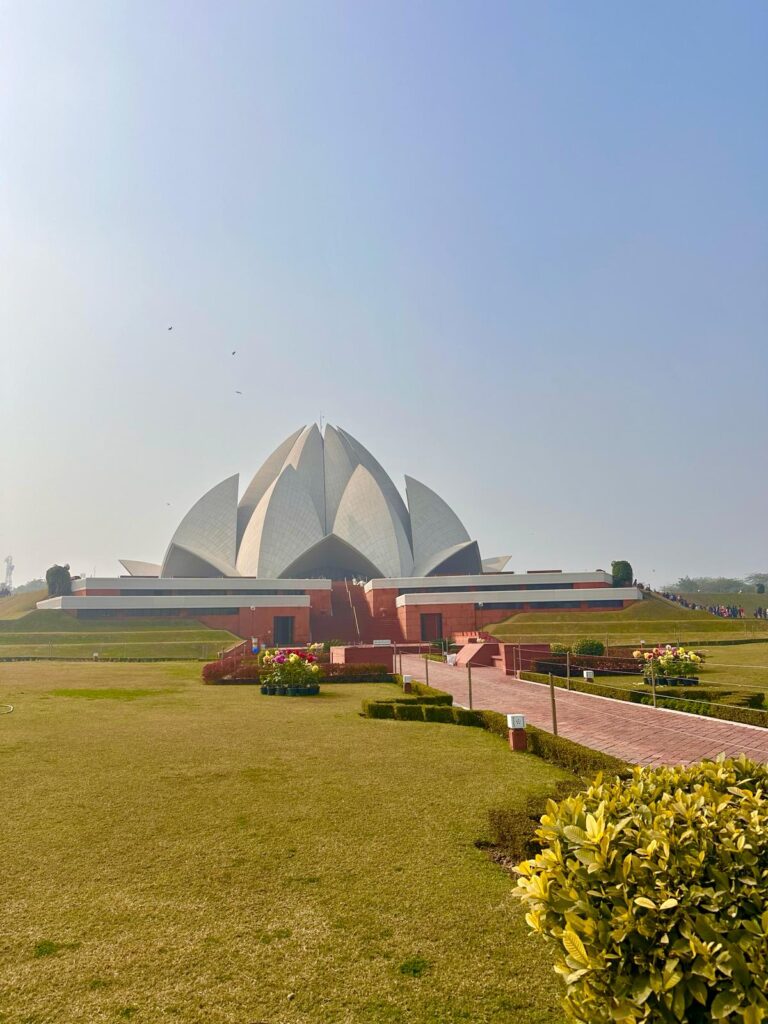
The Best Buildings to Visit in South India
South India, with its distinct cultural and historical identity, offers a rich tapestry of architectural styles. This section explores four magnificent structures that exemplify the architectural diversity and grandeur of this region.
Mysore Palace: A Jewel of the Wodeyar Dynasty
The Mysore Palace, a historical palace in the city of Mysore in Karnataka, is one of the most splendid royal residences in India. Known for its Indo-Saracenic style of architecture, the palace blends Hindu, Muslim, Rajput, and Gothic themes into a stunning visual treat.
Built in the early 20th century, it’s adorned with beautifully designed interiors, including intricately carved wooden doors, colorful stained glass windows, and an array of paintings and artifacts. The palace, especially during the Dussehra festival, is a spectacle of lights and festivities, showcasing the rich cultural heritage of the region.
Meenakshi Temple, Madurai: A Dravidian Architectural Masterpiece
The Meenakshi Temple in Madurai, Tamil Nadu, is not just a place of worship but an architectural marvel of the Dravidian style. Dedicated to the goddess Meenakshi, a form of Parvati, and her consort, Sundareshwarar, a form of Shiva, the temple is famous for its towering gopurams (gateway towers), adorned with thousands of colorful and intricately carved statues.
The temple complex is a city within a city, encompassing an array of shrines, mandapas (pavilions), and holy tanks, each narrating tales from Indian mythology and epics.
Brihadeshwara Temple, Thanjavur: A Testament to Chola Architectural Prowess
The Brihadeshwara Temple, also known as the Big Temple, in Thanjavur is a UNESCO World Heritage Site and one of the greatest architectural achievements of the Chola Empire. Built by Rajaraja Chola I in 1010 AD, the temple is a brilliant example of Dravidian architecture.
Its vimana (temple tower) stands at about 66 meters, one of the tallest in the world. The temple is also famed for its massive Nandi statue, carved out of a single rock. The exquisite frescoes and sculptures depict the wealth and artistic expertise of the Chola dynasty.
Konark Sun Temple, Odisha: A Chariot for the Sun God
The Konark Sun Temple in Odisha, shaped like a giant chariot, is an iconic symbol of India’s ancient architectural and artistic heritage. Built in the 13th century, the temple was dedicated to the Sun God. Its intricate carvings and detailed sculptures are unparalleled, depicting not just religious themes but also scenes of everyday life.
Although partly in ruins, the temple’s magnificence and the ingenuity of its construction continue to mesmerize historians and architects alike.
South India’s architectural grandeur, as seen in these landmarks, is a fusion of religious significance, historical context, and artistic expression. These structures are not just stone and mortar; they are a legacy of the region’s rich and vibrant past.
Still looking for an affordable accomodation in India? Check out Agoda by clicking on this link or using the tool down below!
The Best Buildings to Visit in Western India
Western India, encompassing the states of Maharashtra, Gujarat, and Rajasthan, is a region of diverse landscapes and rich cultural heritage. This section highlights two iconic structures that represent the architectural splendor and historical significance of this vibrant region.
Gateway of India, Mumbai: A Colonial Era Landmark
The Gateway of India, located in Mumbai, Maharashtra, is an emblematic structure that marks the era of British colonial rule in India. Constructed in 1924, this basalt arch stands as a memento of the British Raj’s influence and power. Designed in the Indo-Saracenic style, it combines elements of Hindu and Muslim architectural styles with influences of 16th-century Gujarati architecture.
The Gateway was erected to commemorate the landing of King George V and Queen Mary in Mumbai. Today, it’s a popular tourist spot, offering stunning views of the Arabian Sea and a window into the colonial history of India.
Ajanta and Ellora Caves, Maharashtra: A Window into India’s Spiritual Art
The Ajanta and Ellora Caves, UNESCO World Heritage Sites located in the Aurangabad district of Maharashtra, are a remarkable example of ancient Indian art and architecture. The Ajanta Caves, dating back to the 2nd century BCE to 650 CE, are renowned for their breathtaking murals and sculptures that depict Buddhist religious art, illustrating the life of the Buddha and various Jataka tales.
The Ellora Caves, dating from 600 to 1000 CE, represent a mix of Buddhist, Hindu, and Jain rock-cut temples. The most notable among these is the Kailasa Temple, a monumental, monolithic structure dedicated to Lord Shiva, showcasing the zenith of Indian rock-cut architecture. These caves not only reflect the religious tolerance of the period but also the artistic and architectural advancements of ancient India.
Western India’s architectural wonders are a testament to the region’s historical depth and cultural diversity. From colonial landmarks to ancient cave temples, these structures offer a glimpse into the rich tapestry of India’s past.
Rather looking for a low budget option? Hostelworld offers both low-budget hotels and hostels. Click on the link or use the tool down below to immediately search for your next hostel!
The Best Buildings to Visit in Northern India
Northern India, a region steeped in history and diverse cultures, is home to some of the country’s most iconic and revered architectural landmarks. This section explores four such jewels that represent the architectural beauty and historical depth of Northern India.
Golden Temple, Amritsar: A Symbol of Sikhism’s Spiritual Essence
The Golden Temple, formally known as Harmandir Sahib, in Amritsar, Punjab, is not just a central religious place of the Sikhs but also a symbol of brotherhood and equality. The upper floors of this iconic temple are covered with pure gold, which gives it its distinctive appearance and name.
Built around a man-made pool in 1577 by Guru Ram Das, the fourth Sikh Guru, its architecture draws on Hindu and Islamic styles. The Golden Temple is a place of great beauty and sublime peacefulness. Its Langar, a community kitchen, serves free meals to thousands daily, embodying the Sikh principle of selfless service.
Mehrangarh Fort, Jodhpur: A Citadel of Cultural Magnificence
Perched on a rocky hill 400 feet above the skyline of Jodhpur, Rajasthan, Mehrangarh Fort is one of the most impressive and formidable forts in India. Built in 1459 by Rao Jodha, the fort’s imposing thick walls enclose several palaces known for their intricate carvings and expansive courtyards.
The fort, with its seven gates, houses a museum that displays a splendid collection of royal artifacts. Its panoramic view of the blue city of Jodhpur and the stark contrast it forms with the Thar Desert is captivating.
Jaisalmer Fort, Jaisalmer: The Golden Fortress in the Desert
Jaisalmer Fort, located in the heart of the Thar Desert in Rajasthan, is one of the world’s largest fully preserved fortified cities. Known as the ‚Sonar Quila‘ or Golden Fort due to its yellow sandstone walls that gleam in the sun, the fort was built in 1156 by Rajput ruler Rawal Jaisal. The fort, which seems like a scene from the Arabian Nights, houses palaces, temples, and residential complexes. Its ornate Jain temples and the stunning view of the sun setting behind the desert make it a breathtaking sight.
Tibetan Temple, Varanasi: A Touch of Tibet in India
The Tibetan Temple in Varanasi, Uttar Pradesh, is a beautiful representation of Tibetan Buddhist culture. Located in Sarnath, where Lord Buddha delivered his first sermon, the temple is adorned with Thangka paintings and a statue of Shakyamuni Buddha. The temple’s architecture, with its vibrant colors and intricate designs, offers a serene and spiritual atmosphere. It is a symbol of the Buddhist heritage and an important site for Buddhist pilgrims.
Northern India’s architectural landmarks are not just structures of stone and marble; they speak a lot about the region’s rich history, diverse cultures, and spiritual depth. Each monument tells a story, making them a must-visit for anyone seeking to delve into India’s past.
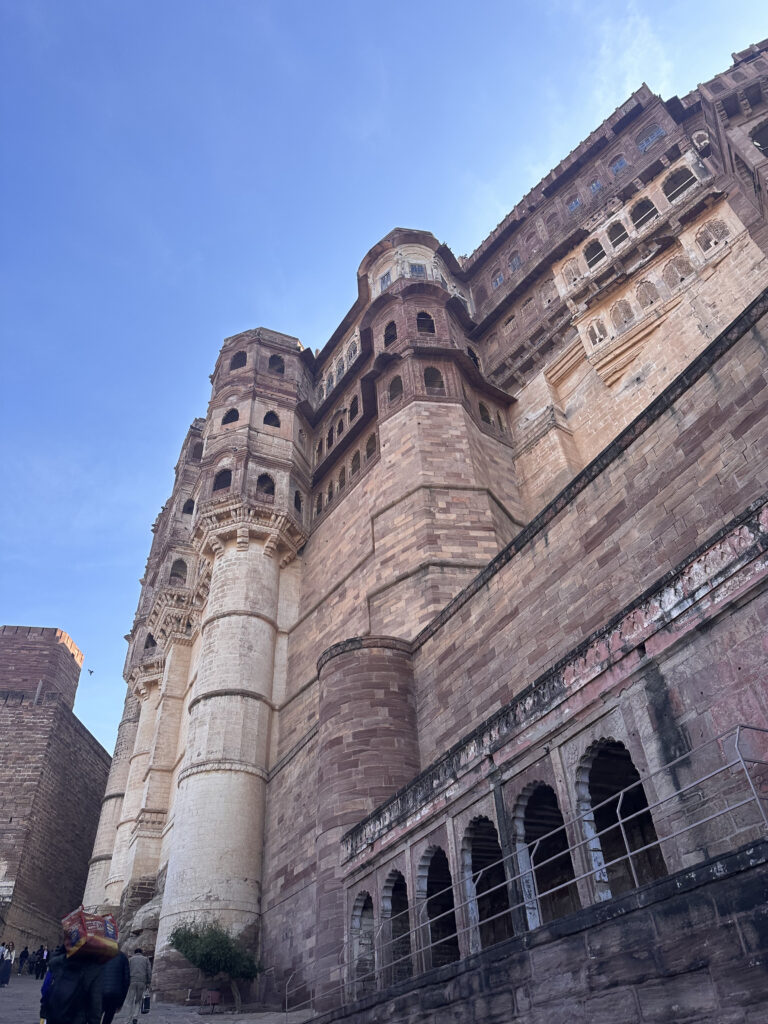
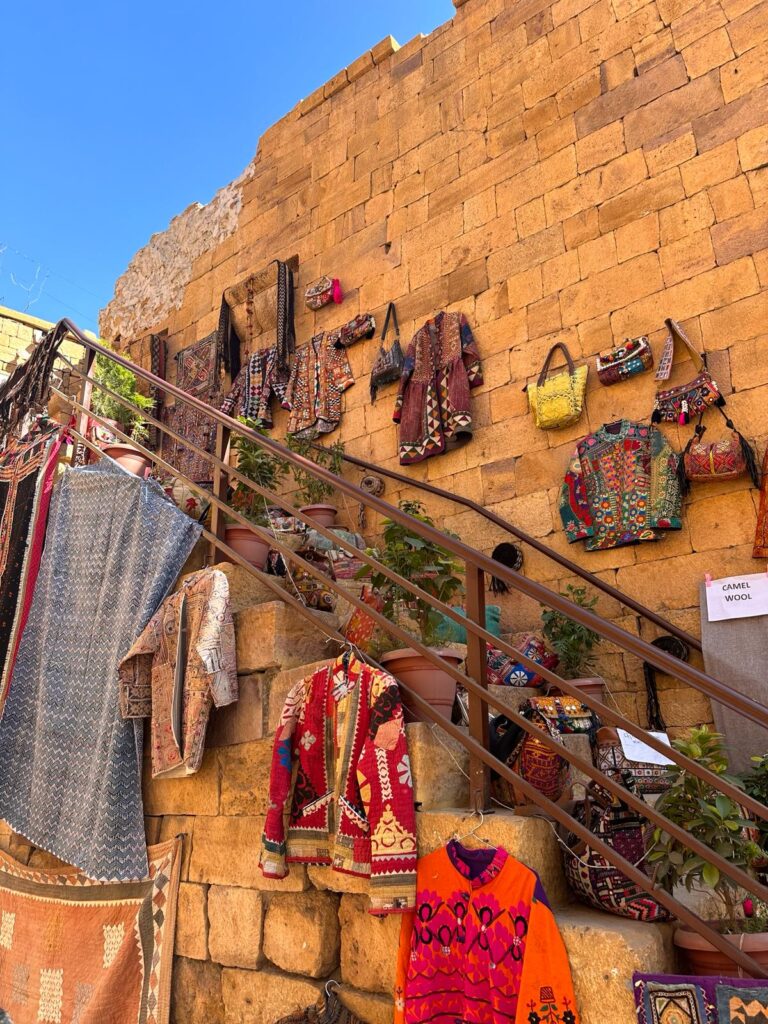
The Best Buildings to Visit In India
India’s architectural landscape is dotted with numerous other remarkable buildings, each representing a unique story and style. This section will explore two more of the best buildings to visit in India.
Charminar in Hyderabad: An Icon of Islamic Architecture
The Charminar, located in the heart of Hyderabad, Telangana, is a monument and mosque that has become an iconic symbol of the city. Constructed in 1591 by Sultan Muhammad Quli Qutb Shah, the Charminar stands at the intersection of the historical trade routes, marking the center of the city.
It is known for its four grand arches, facing four cardinal directions, and its four minarets that soar to a height of 48.7 meters each. The structure is a fine example of Cazia style architecture, combining elements of Persian and Islamic architectural designs. The Charminar is not only a significant historical monument but also a cultural and social hub of Hyderabad.
Victoria Memorial in Kolkata: A Legacy of the British Raj
The Victoria Memorial, located in Kolkata, West Bengal, is a large marble building dedicated to the memory of Queen Victoria. Constructed between 1906 and 1921, the memorial is an exemplary illustration of British Raj architecture in India.
Designed by Sir William Emerson in the Indo-Saracenic revivalist style, it combines British and Mughal architectural elements along with Venetian, Egyptian, Deccani, and Islamic influences. Today, it serves as a museum and a tourist attraction, housing a collection of rare and antique books, manuscripts, paintings, and sculptures, chronicling the rich history of India.
These additional architectural landmarks of India are more than just historical structures; they are reflections of the diverse influences that have shaped India’s cultural and architectural narrative. They stand as testaments to the country’s rich history and serve as sources of inspiration and education for generations.
For seamless travel across India, consider using 12AsiaGo and Busbud to book your transportation. Click either on the links or use the 12AsiaGo tool down below for quick searches!
Frequently Asked Questions on the Best Buildings to Visit in India
As we conclude our journey through India’s architectural marvels, let’s address some frequently asked questions that might arise for travelers and history enthusiasts that are dying to learn more about the best buildings to visit in India. These questions help in understanding the significance of these structures and planning visits to these iconic sites.
For more travel tips in India, read here further.
Conclusion on The Best Buildings to Visit in India
Our exploration of the 26 best buildings to visit in India offers an insight into the country’s rich architectural heritage. These structures are not just monuments of stone; they are living narratives of India’s history, culture, and artistic excellence.
They remind us of the diverse influences that have shaped the Indian subcontinent over millennia. Each site beckons with its unique story, waiting to be explored and appreciated. As we conclude this journey, we invite you to experience the architectural wonders of India – each visit promises to be an enlightening and enriching experience.
This concludes our comprehensive guide to India’s architectural marvels. I hope it inspires you to explore these magnificent sites and immerse yourself in India’s rich historical and cultural legacy.
Last but not least, do NOT forget to check out our full India guide where we will be talking about everything you need to know for your first trip to India and our exact 4-week route!
For an easy and smooth phone connection throughout your India trip, think about using eSIM cards. They’re like virtual SIMs, making it simple without dealing with physical cards. Enjoy a stress-free travel experience with the convenience of eSIMs!
Airalo offers plans starting from 5$ already and it’s so worth it!
I hope to see you again soon on this blog. Do not forget to share this ‚best buildings to visit in India‘ guide with your friends and family too 🙂



